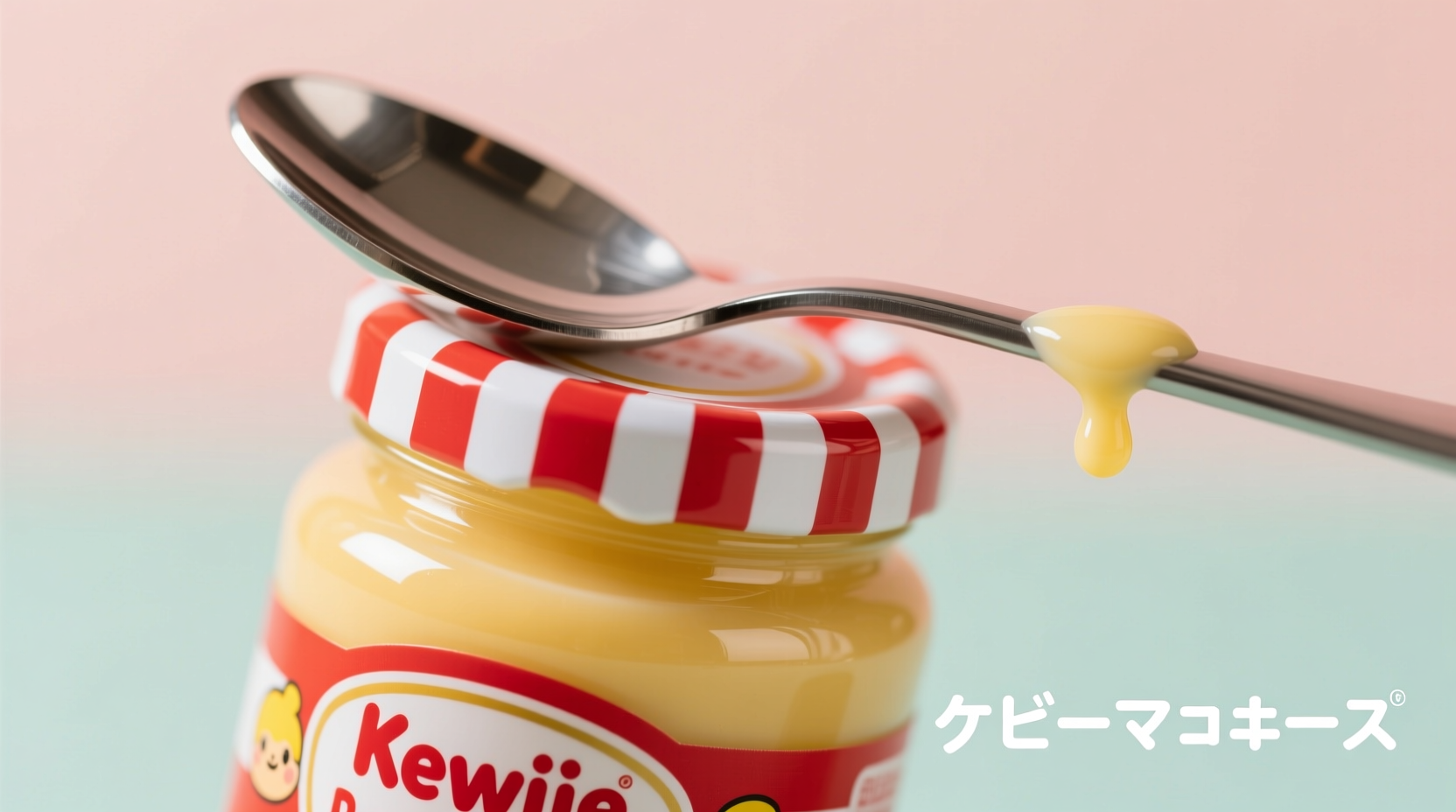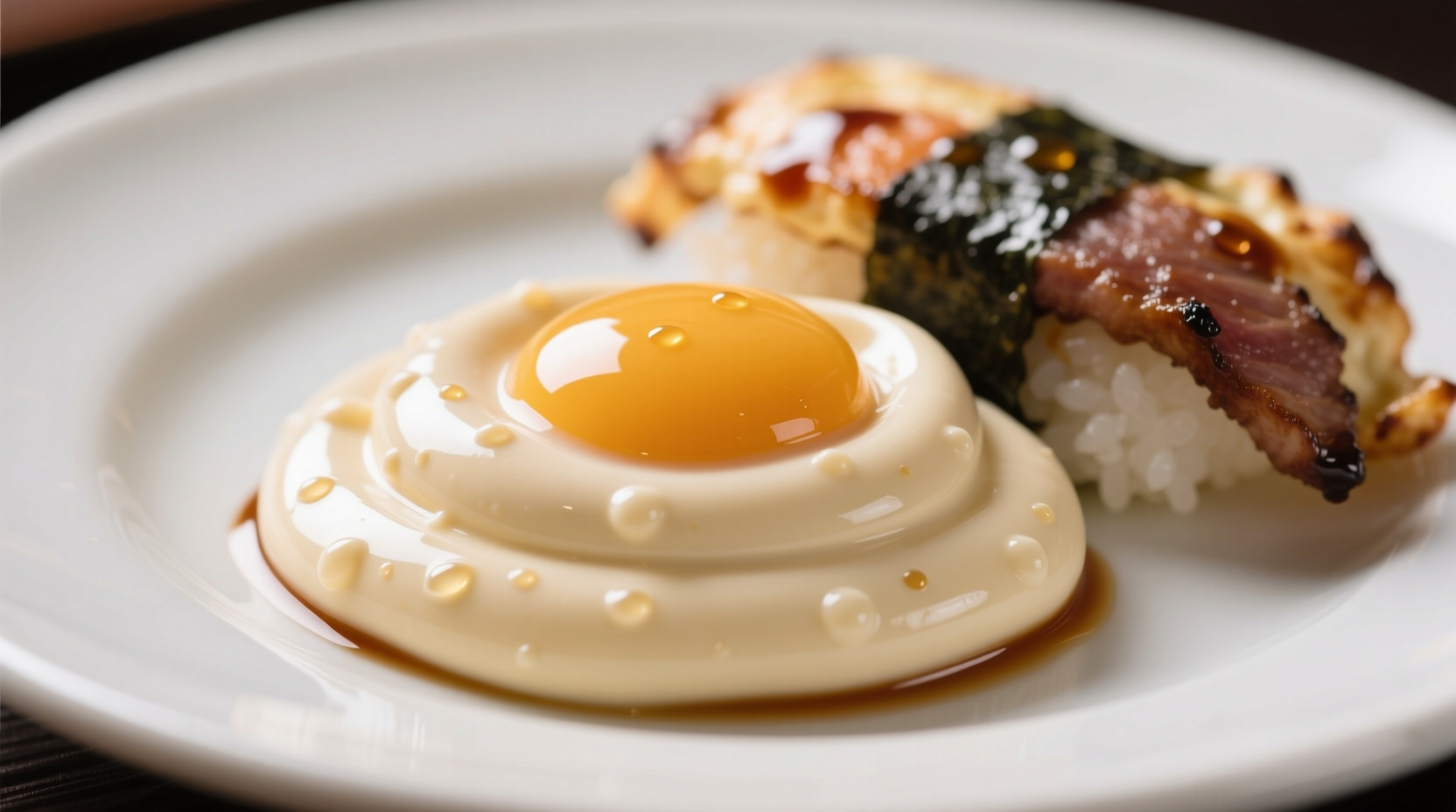If you've ever wondered what sets Kewpie mayo apart from standard American brands, you're not alone. This Japanese condiment has taken kitchens worldwide by storm, and understanding its distinctive flavor profile is key to using it effectively. Unlike traditional mayonnaise, Kewpie offers a more complex sensory experience that enhances everything from sushi rolls to sandwiches.
What Exactly Is Kewpie Mayo?
Originating in Japan in 1925, Kewpie established itself as the country's first commercial mayonnaise producer. While Western mayonnaise typically uses distilled vinegar, egg whites, and sometimes lemon juice, Kewpie's formulation follows Japanese culinary traditions with specific ingredients that create its signature taste. The brand now produces versions for different markets, with the Japanese import version containing MSG (monosodium glutamate) while the American-made version omits it.

Breaking Down Kewpie's Distinctive Flavor Profile
Kewpie mayo's taste can be understood through several key characteristics that differentiate it from standard American mayonnaise:
Richer, Creamier Texture
The texture immediately distinguishes Kewpie from other mayonnaises. With double the egg yolks compared to many Western brands, Kewpie delivers a noticeably thicker, silkier mouthfeel. This richness isn't just textural—it carries flavor compounds more effectively, making each bite more impactful. Food scientists at the University of California, Davis note that egg yolk concentration directly affects both texture and flavor delivery in emulsified sauces (UC Davis Food Science Department).
Umami Depth (The Secret Weapon)
The most distinctive element in Kewpie's flavor is its pronounced umami character. This comes from two sources:
- Monosodium glutamate (MSG) - Present in the Japanese import version, contributing to the savory depth
- Rice vinegar - Instead of distilled vinegar, providing a milder acidity with natural glutamates
This umami element makes Kewpie taste more substantial and satisfying than standard mayo. According to research published in the journal Flavour, umami compounds enhance perceived richness in fatty foods without increasing actual fat content.
Reduced Acidity
Traditional American mayonnaise often uses distilled vinegar or lemon juice, creating a sharper tang. Kewpie's use of rice vinegar results in a more mellow acidity that doesn't overpower other ingredients. This makes it particularly valuable in applications where you want creaminess without competing acidity, such as in sushi rice or delicate seafood dishes.
| Characteristic | Kewpie Mayo (Japanese Import) | Standard American Mayo |
|---|---|---|
| Primary Acidifier | Rice vinegar | Distilled vinegar |
| Egg Content | Double egg yolks | Whole eggs or single yolks |
| Umami Source | MSG + rice vinegar | None |
| Sweetness Level | Mildly sweet | Less sweet |
| Texture | Thicker, creamier | Thinner, more liquid |
Why Kewpie Tastes Different: The Science Behind the Flavor
The distinctive taste of Kewpie isn't accidental—it's the result of specific ingredient choices that interact scientifically to create its unique profile:
Egg Yolk Concentration Matters
With approximately twice the egg yolks of standard American mayonnaise, Kewpie contains more lecithin, the natural emulsifier in yolks. This creates a more stable emulsion that feels richer on the palate. The higher fat content from additional yolks also carries flavors more effectively, making the overall taste experience more intense.
Rice Vinegar vs. Distilled Vinegar
Rice vinegar has a milder, slightly sweet acidity compared to the sharper bite of distilled vinegar. This difference significantly impacts the final flavor profile. According to the USDA Food Composition Database, rice vinegar contains natural sugars and amino acids that contribute subtle sweetness and umami notes absent in distilled vinegar.
The MSG Factor
The Japanese import version contains a small amount of MSG (about 0.1-0.2%), which enhances the savory notes without creating an artificial taste. Contrary to common misconceptions, MSG occurs naturally in many foods like tomatoes and Parmesan cheese. The U.S. Food and Drug Administration recognizes MSG as generally recognized as safe (GRAS), and in Kewpie's concentration, it simply amplifies the existing savory flavors.
How Kewpie's Flavor Transforms Your Cooking
Understanding Kewpie's taste profile helps you leverage it effectively in your kitchen. Its unique characteristics make it particularly valuable in specific applications:
Where Kewpie Shines
- Sushi and rice bowls - The milder acidity complements vinegared rice without overwhelming it
- Asian-inspired dressings - Blends seamlessly with soy, ginger, and sesame without clashing
- Grilled meats - The umami depth enhances charred flavors without competing acidity
- Dipping sauces - Creates more complex flavor bases for spring rolls or tempura
When to Reach for Regular Mayo Instead
While versatile, Kewpie isn't always the perfect substitute. Traditional American mayo works better when:
- You need pronounced tanginess (like in classic tuna salad)
- Creating extremely acidic dressings where rice vinegar's mildness would get lost
- Following recipes specifically developed for standard mayo's flavor profile
Common Misconceptions About Kewpie's Flavor
Several myths persist about Kewpie's taste that deserve clarification:
"Kewpie tastes fishy"
This misconception likely stems from confusion with fish sauce or miso. Authentic Kewpie contains no fish products. Any perceived fishiness usually comes from improper storage causing oil separation and rancidity.
"The MSG makes it taste artificial"
At the concentrations used in Kewpie (0.1-0.2%), MSG enhances natural savory notes rather than creating an artificial taste. Blind taste tests conducted by Consumer Reports showed most participants couldn't distinguish between MSG-containing and MSG-free versions when unaware of which they were tasting.
"It's just sweeter mayo"
While Kewpie does contain a touch more sugar than some American brands, its distinctive quality comes primarily from the umami depth and richer texture, not just sweetness. The sugar primarily balances the acidity rather than creating a sweet condiment.
Getting the Most From Kewpie's Flavor Profile
To maximize Kewpie's unique taste characteristics in your cooking:
- Store properly - Keep refrigerated and use within 30 days of opening to preserve flavor integrity
- Balance carefully - Its richness means you often need less than standard mayo for equivalent flavor impact
- Pair strategically - Combine with ingredients that benefit from umami enhancement (mushrooms, tomatoes, grilled meats)
- Don't overheat - High temperatures can cause separation; add near the end of cooking for sauces
Understanding what Kewpie mayo tastes like transforms how you use this versatile condiment. Its richer texture, umami depth, and milder acidity create opportunities for more complex flavor development in dishes where standard mayo might fall short. Whether you're crafting the perfect sushi roll, elevating a simple sandwich, or creating a signature dipping sauce, recognizing Kewpie's distinctive flavor profile helps you make intentional choices that elevate your cooking.











 浙公网安备
33010002000092号
浙公网安备
33010002000092号 浙B2-20120091-4
浙B2-20120091-4